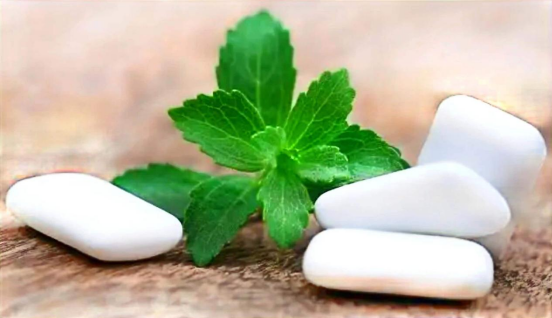Food additive - maltitol
Release time:
2024-01-25

Brief introduction:
Maltitol is a sugar alcohol (polyol) that is used as a sugar substitute. It is 75-90% sweeter than sucrose (table sugar) and has almost the same properties except for browning.
It is used in place of table sugar because it has half the energy of table sugar, does not promote tooth decay, and has less of an impact on blood sugar. In chemical terms, maltitol is referred to as 4-O-α-glucopyranosyl-D-sorbitol.
Chemical properties:
The crystalline form of maltitol is the same (volume) as table sugar, and after liquefaction upon exposure to high temperatures, its browning and caramelization are very similar to sucrose.
The crystalline form dissolves easily in warm liquids (120°F/48.9°C and above); If room temperature or cold liquids are used, powder form is preferred. Due to its sucrose-like structure, maltitol is easy to produce and marketed in crystalline, powder, and syrup form.
It is not metabolized by oral bacteria and therefore does not promote tooth decay.
It is absorbed a bit more slowly than sucrose, which makes it more suitable for diabetics than sucrose. Its food energy value is 2.1 kcal/g (8.8 kJ/g); (3.9 kcal/g (16.2 kJ/g) for sucrose).

Production & Usage:
Maltitol is a disaccharide formed by hydrogenation of maltose in starch. Maltitol syrup is a hydrogenated starch hydrolysate that is made by hydrogenating corn syrup, which is a mixture of carbohydrates produced by the hydrolysis of starch. This product contains 50 to 80 percent maltitol by weight. Most of the rest is sorbitol, with a small amount of other sugar-related substances.
The high sweetness of maltitol makes it unnecessary to mix with other sweeteners. Compared to other sugar alcohols, it has a negligible cooling effect (positive heat of dissolution), which is very similar to the subtle cooling effect of sucrose. It is used in confectionery manufacturing, especially sugar-free hard candy, chewing gum, chocolate, baked goods and ice cream.
The pharmaceutical industry uses maltitol as an excipient and as a low-calorie sweetener. Its similarity to sucrose allows it to be used in syrup, with the advantage that it is less likely to crystallize (which can cause the cap to stick). Maltitol can also be used as a plasticizer, emollient, and humectant in gelatin capsules.


Effect:
1. Like other sugar alcohols (with the possible exception of erythritol), maltitol has a laxative effect.
2. Excessive maltitol intake can lead to gastrointestinal discomfort, such as bloating, diarrhea and other indigestion symptoms.
RELATED NEWS
Copyright © Nanjing Shundajie Chemical New Materials Co., Ltd. Powered by www.300.cn











